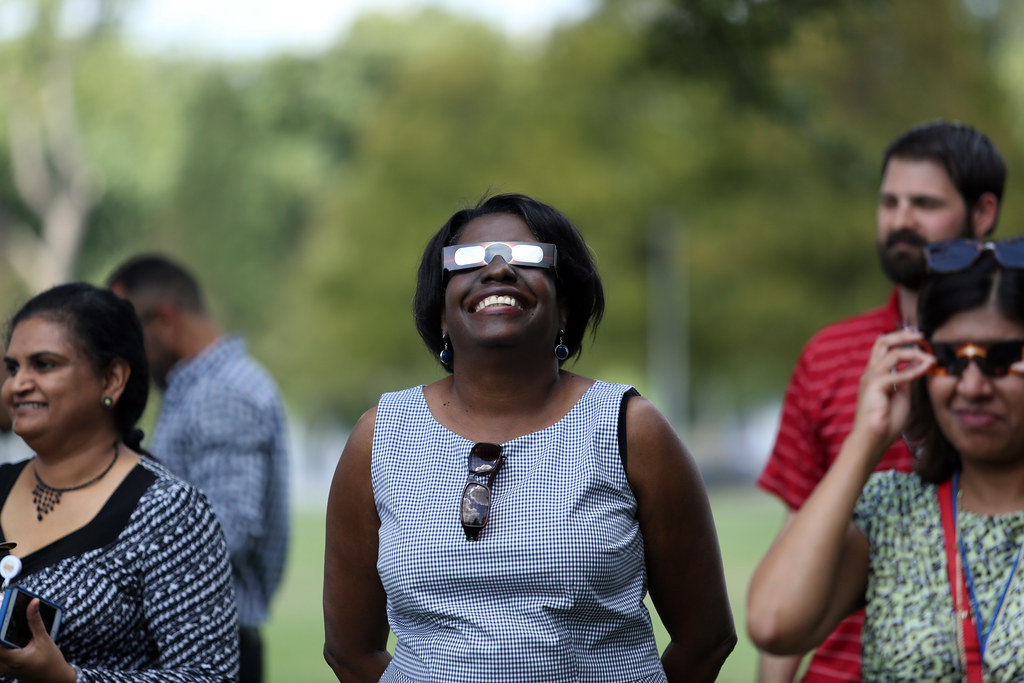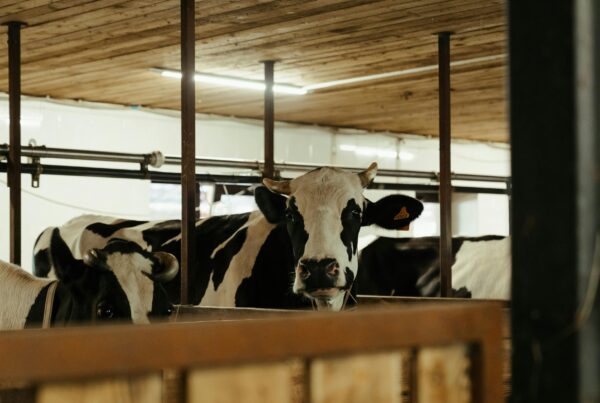With less than a week until a historic total solar eclipse, the Texas forecast for April 8 is a bit iffy right now.
Some of the places around the state where thousands will gather to see the eclipse could receive significant rains. And even if the weather remains dry, there’s a chance that cloud cover could obscure part of the transition between light and dark, as the moon passes in front of the sun.
KPRC meteorologist Anthony Yanez says two weather models show a low-pressure system could bring overcast or rainy weather but that conditions are hard to predict until eclipse day is closer. Listen to the interview above or read the transcript below.
This transcript has been edited lightly for clarity:
Texas Standard: You posted something of a warning on the KPRC site yesterday about what we might see on eclipse day. As of now, what are you seeing in the forecast that has you worried for next Monday’s weather conditions?
Anthony Yanez: Well, going back to even last Thursday, what I was looking at is; OK, what are the long-range forecast models showing? And going back to Thursday, you’re like, “oh, it’s overcast; it’s cloudy and it’s rainy.” And it’s not just for us in Southeast Texas. It’s for the total path of totality path.
And then even yesterday’s forecast, you have thick clouds. And of course, even forgetting about the rain, if you have thick clouds, all that happens is the sky gets a little dark and you completely miss the awe-inspiring experience that is totality.
But I do want to tell you the one thing that’s changed with the long-range models today: both models for the path of totality right now don’t have rain. One of the models, the European model, actually has a few gaps of sunshine at 1 o’clock on Monday. And the American model – again, which was just a washout yesterday – did get rid of the rain and still has clouds, but they’re not as thick.
So the hope is that this trend of drier and possibly not as cloudy weather continues.
» MORE: Like ‘some invisible force is taking a bite out of the sun’: What to expect on eclipse day in Texas
So what parts of Texas have the greatest risk of bad weather on eclipse day? And are there areas that are least likely to be affected by a little bit of rain and those cloudy conditions?
Well, the European model, for this morning at least – and again, we’re six days out, so a lot is going to change with this forecast, and a lot’s already changed since yesterday – the European model has clearer skies from Waco, Dallas to Texarkana. And so that’s a better-looking forecast.
The American model is still pretty cloudy statewide, but at least it got rid of the rain, so that’s a good thing. What we have to watch now is the trend. And we see that basically it keeps getting drier and clearer, or is this just a one-day thing? And we go back to basically what yesterday looks like and what you got to know about, like long-range models – models really don’t get too accurate until five days out. And that would be on Wednesday.
And the short-range high-resolution models start coming in on Saturday, and that’s when you can kind of tell what kind of clouds we’re going to get. And that really is key. Because if it’s overcast skies and thick clouds, you really just don’t see a thing besides it getting dark outside.
» GET MORE NEWS FROM AROUND THE STATE: Sign up for Texas Standard’s weekly newsletters
Well, you anticipated my next question about the types of clouds in the sky and how big a difference that that will make. Can you elaborate?
Yeah. I mean, sky conditions are everything. For the total solar eclipse in 2017, I was in Eola Hills, Oregon, and there was not a cloud in the sky. And so, to see the sun’s corona, the diamond ring effect really is an emotional experience, more than just a sight. It’s an experience.
So now when clouds are in the forecast, the next key is, OK, what kind of clouds? So first of all, the worst kind of clouds are what I’ve been mentioning, which is the overcast skies. You can get rain with those that are low clouds. They’re thick.
I think all of us are familiar with those when you just don’t even see the sun during the day, and it’s just kind of gray skies. And if that happens during the eclipse, it’ll get a little darker during the eclipse. But it’s almost like a strong storm’s coming in, like it gets dark during the day. And so there’s not much of an experience there.
Now, if you have partly cloudy skies or mid-level cumulus clouds, those are frustrating clouds because for the path of totality in Texas, you get 4 minutes plus. And so what happens is sometimes you get a thick cloud that moves over the sun and you’re like, “oh man, I’m missing the corona.” And then you get a little clearing and you’re like, “oh, that’s great.” But then another cloud goes by. So at least you’re seeing it, but you’re basically at 4, 4.5 minutes of frustration.
And then the other clouds, which would be a better case scenario – not great, not perfect – are the high cirrus clouds. They’re up 30,000 feet in the sky. And you can see totality, but it’s not a real clear image. It’s more of a little diffuse image. Now, that’s OK: If we get that, we’ll take that, compared to where the forecast is right now. The hope is you get clear skies. Sometimes you don’t. But the thinner the clouds, the better.













